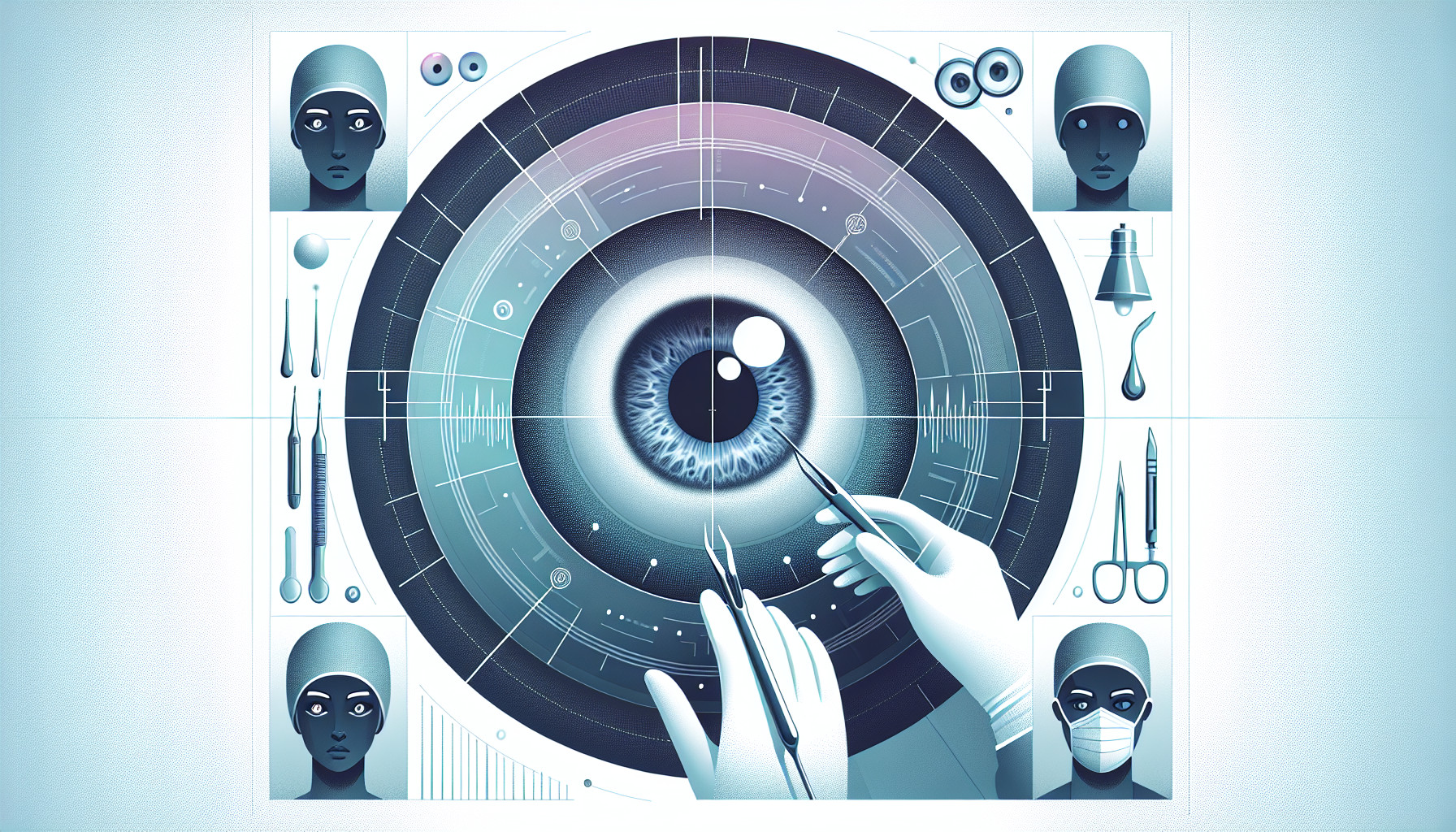Our Summary
This research paper is about a study that tested a new device, called a very large electrode array for retinal stimulation (VLARS), designed to restore vision in blind patients suffering from diseases that cause degeneration of the retina such as retinitis pigmentosa. The device works by electrically stimulating the retina.
The VLARS device, which is made of a material called polyimide, is about the size of a dime and has 250 gold electrodes coated with iridium oxide. The device was tested for safety and compatibility with the body in pig eyes and then in ten rabbits.
The results showed that the procedure to implant the device is safe but difficult. In some cases, it caused the retina to detach or tear, and in others, it caused the cornea to swell, making follow-up examinations difficult. The device wasn’t always fixed properly in the eye. However, when the device was used to stimulate the retina, it caused responses in the visual part of the brain.
In summary, the study shows that the VLARS device can be safely implanted and has the potential to restore a larger field of vision compared to current devices. However, the implantation process is challenging and there were some complications.
FAQs
- What is the purpose of the very large electrode array for retinal stimulation (VLARS) device?
- What were the results of the study on the safety and effectiveness of the VLARS device?
- What complications were encountered during the implantation process of the VLARS device?
Doctor’s Tip
A doctor may advise a patient undergoing retinal surgery with a VLARS device to closely follow post-operative care instructions, attend all follow-up appointments, and report any unusual symptoms or changes in vision immediately. It is important to be aware of the potential risks and complications associated with the procedure and to discuss any concerns with the healthcare team. Additionally, maintaining overall eye health through regular check-ups and healthy lifestyle habits can help support the success of the surgery.
Suitable For
Patients who are typically recommended for retinal surgery include those suffering from diseases that cause degeneration of the retina, such as retinitis pigmentosa. These patients may experience vision loss or blindness due to the progressive deterioration of the retina. Retinal surgery may be recommended to help restore or improve vision in these individuals.
Additionally, patients with other retinal disorders such as macular degeneration, diabetic retinopathy, or retinal detachment may also be candidates for retinal surgery. These conditions can cause vision loss or impairment and may require surgical intervention to address the underlying issues and improve visual function.
Overall, patients who are experiencing vision loss or impairment due to retinal diseases or disorders may be recommended for retinal surgery in order to restore, preserve, or improve their vision.
Timeline
Before retinal surgery:
- Patient is diagnosed with a retinal degenerative disease such as retinitis pigmentosa
- Patient undergoes pre-operative evaluations and tests to determine eligibility for surgery
- Patient discusses risks and benefits of surgery with their ophthalmologist
- Patient undergoes anesthesia before surgery
During retinal surgery:
- Surgeon makes incisions in the eye to access the retina
- Surgeon implants the VLARS device onto the retina
- Surgeon closes incisions and patient is taken to recovery
After retinal surgery:
- Patient may experience pain, discomfort, or blurred vision in the days following surgery
- Patient is prescribed medications to manage pain and prevent infection
- Patient attends follow-up appointments to monitor healing and adjust the device settings
- Patient undergoes rehabilitation to learn how to interpret visual signals from the device
- Patient gradually regains vision and experiences improvements in their ability to see shapes and objects
Overall, the timeline of a patient’s experience before and after retinal surgery involves preparation, surgery, recovery, and rehabilitation to restore vision and improve quality of life.
What to Ask Your Doctor
- What specific eye condition do I have that would benefit from retinal surgery?
- What are the potential risks and complications associated with retinal surgery using the VLARS device?
- How experienced are you in performing retinal surgeries with this device?
- What is the success rate of this surgery in restoring vision for patients with my condition?
- How long is the recovery process after retinal surgery with the VLARS device?
- Will I need any additional treatments or follow-up appointments after the surgery?
- Are there any lifestyle changes or precautions I should take after the surgery?
- What are the expected outcomes in terms of improved vision and quality of life after the surgery?
- Are there any alternative treatment options available for my condition?
- Can you provide me with any additional resources or information about retinal surgery using the VLARS device?
Reference
Authors: Lohmann TK, Haiss F, Schaffrath K, Schnitzler AC, Waschkowski F, Barz C, van der Meer AM, Werner C, Johnen S, Laube T, Bornfeld N, Mazinani BE, Rößler G, Mokwa W, Walter P. Journal: J Neural Eng. 2019 Nov 6;16(6):066031. doi: 10.1088/1741-2552/ab4113. PMID: 31480027
